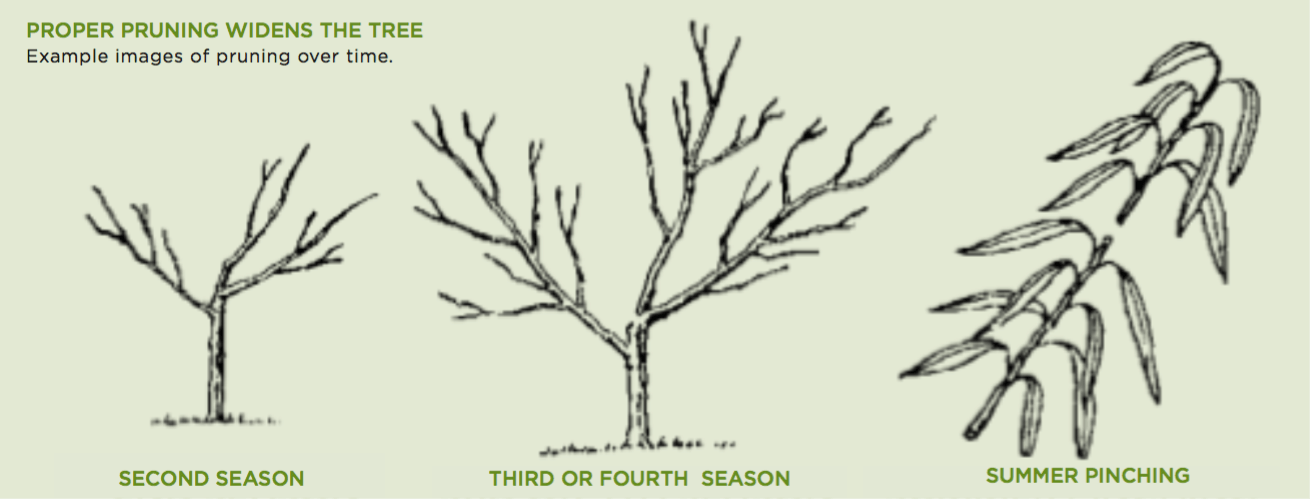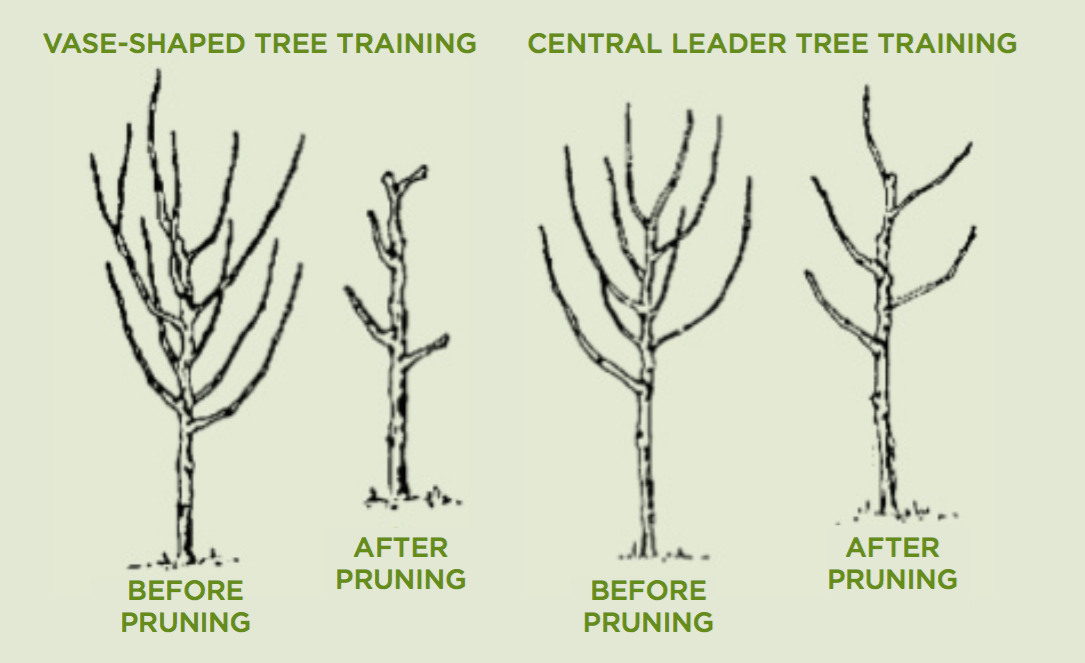Pruning fruit trees is a critical orchard management technique needed to improve overall fruit quality. However, during a fruit tree’s lifespan the reason for pruning will change.
A newly planted bare root tree needs the top pruned back to match the bottom of the tree. When a bare root tree is initially dug up, it loses a considerable amount of its roots. The decreased root system will not be able to support an unchanged top. By pruning the top back, you balance the tree and provide it with a good foundation for future growth.
During a tree’s juvenile years (ranging from 1-6 years), pruning stimulates growth. Producers often think this sounds counterintuitive, but by removing growth you can actually stimulate more growth. Research indicates pruned trees will outgrow unpruned trees of the same age. During these early years, it is also time to start training fruit trees by shaping their growth. Through manipulation of the growth pattern, you can increase production and decrease the likelihood of breakage. By opening the center of some fruit trees you can increase air flow and potentially decrease disease.
After the fruit tree has been established and trained, you will need to provide some maintenance pruning. Fortunately, this will not be as intensive.
During all stages of a tree’s life you should first start by removing damaged, diseased or dead limbs first.
When to Prune
The best time to prune a fruit tree is during the dormant season. Pome fruit (fruit with several small seeds in the center) tree pruning is best in late fall to early winter. Stone fruit (hard core with seeds inside) tree pruning is ideal in late winter to early spring. During the winter, trees will stop top growth and defoliate, which will give you an unobstructed view of the limbs and allow you to make better decisions regarding the cuts. There are also times when a tree may require pruning during the growing season, particularly if it has received storm damage. It is also possible that new growth has caused limbs to touch and rub.
More to know about pruning
Water sprouts are fast growing and should be pruned during the growing season to limit energy used by the tree that it could devote to beneficial growth.
Pecan is a drupaceous nut, which makes it a stone fruit. However, when training a pecan tree, we use a central leader instead of an open center.
Espalier is a type of pruning where you train a tree flat against a surface. It is a specialized type of pruning that allows you to grow a fruit tree in certain spaces with limited space.
Type of training
Most fruit trees fall into two groups, although, like most rules, exceptions do exist. The list provided are examples and are not meant to be considered complete. More trees exist for each list and other specialty types of training exist. Pruning is a task that can be accomplished by experts and beginners. The key is to have a plan before you start.
Open Center-Stone Fruit
Stone fruit is trained as an open center, this is also known as vase shape in some areas. This training method usually requires a specific height (between 18 to 36 inches) to be determined. Above that height, the central trunk is pruned with four to six main branches evenly spaced around your tree selected below this point. These branches should be close to a 45 degree angle.
- Peach
- Nectarine
- Japanese Plum
- Jujube
- Olive
- Apricot
Central leader-Pome Fruit
Pome fruit is usually trained with a central leader. A central leader tree has a main branch (what you might call the trunk) that secondary limbs come off of.
- Apple
- Pear
- European Plum
- Cherry
Exceptions
Some exceptions are miniature fruit trees such as the dwarf peach. This type of tree needs some pruning because of its dense growth but does not require training. Another exception is the fig tree, which requires minimal pruning and not for training purposes.
- Miniature Peach
- Fig





Leave A Comment